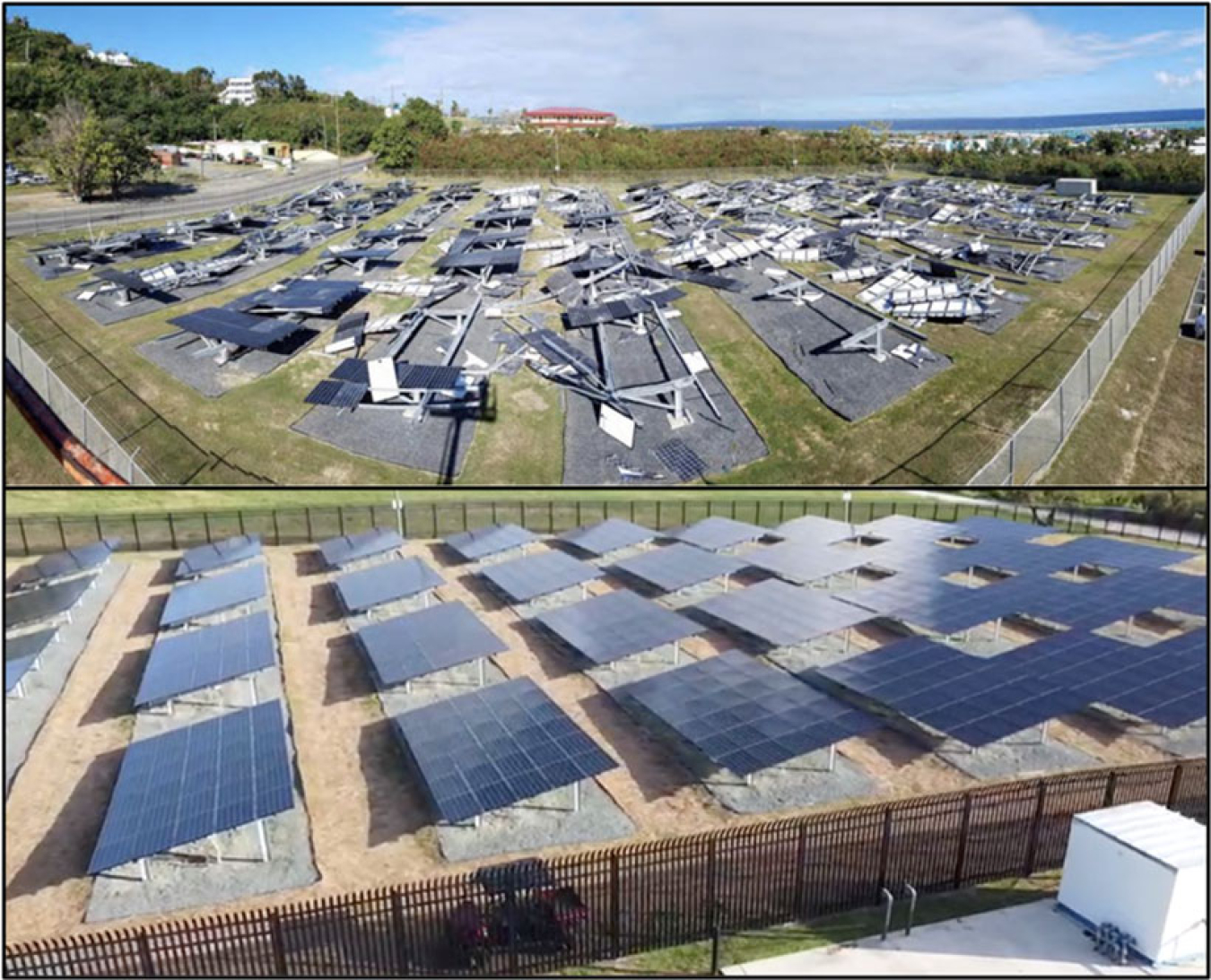
Storm damage at St. Croix after Hurricane Maria (top) and after Hurricane Fiona (bottom).
The General Services Administration (GSA) contracted with the National Renewable Energy Laboratory and Lawrence Berkeley National Laboratory to investigate damage to five government-owned solar photovoltaic (PV) arrays at GSA buildings in the Caribbean. The PV arrays suffered extensive damage from Hurricanes Irma and Maria in 2017. The rebuilding process GSA undertook with its energy service company and engineering firm, Jacobs Engineering, provides helpful lessons learned that can be applied in planning solar PV projects in locations with severe wind and rain events. One of the five sites offered a particularly high-value opportunity for lessons learned due to the innovative rebuilding process utilized by GSA managers and the in-depth analysis performed by the project engineers. Several findings from this analysis are applicable to other arrays across the country.

Inadequate frame stiffness and fastener strength led to failures.
Project Highlights
- The design and installation of the solar PV array left it vulnerable to harsh environmental conditions and exacerbated the failure.
- Updated design features come with upfront cost premiums but should result in fewer outyear expenses because of the more robust design.
Key Benefits
- Extensive analysis completed by project engineers prior to the rebuilding of the site resulted in findings that are applicable to other arrays across the country.
- There were clear and observable causes underpinning the damage seen to each PV array that can be easily addressed in future designs and thus minimize the likelihood of total loss.
Impacts
- Most of the five PV systems examined appeared to be code compliant, yet some experienced total loss while damage to others ranged from minimal to 50% loss, indicating a potential code gap.
- Based on the damage observed and the wind speeds recorded, solar arrays should be able to be designed and maintained to operate reliably in hurricane-prone tropical regions.
- Adequately designed and constructed arrays can be expected to provide a full 25‑year service life; therefore, solar arrays can be reasonably expected to provide a source of resilient power in regions that experience severe weather.
Learn More
Read the full technical report, Toward Solar Photovoltaic Storm Resilience: Learning from Hurricane Loss and Rebuilding Better.

